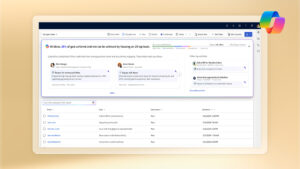Analysis scripts for Performance Analyzer v2.0
Following on from my previous blog post regarding analysis scripts for the tool Performance Analyzer v1.20*, I am now publishing the scripts that come with the latest version, 2.0.
(*Previous post: https://blogs.msdn.microsoft.com/axsupport/2014/08/31/microsoft-dynamics-ax-general-performance-analysis-scripts/)
Download link: https://dynamicsperf.codeplex.com/
After downloading and extracting the tool from the above link, you can find these scripts in the following sub-folders:
- ..\DynamicsPerf\DynamicsPerf – Analysis Scripts
- ..\DynamicsPerf\Scripts – Dynamics AX
There is also a solution file for them which you can open from SQL Server Management Studio (..\DynamicsPerf\Performance Analyzer 2.00 Analyze Data.ssmssln).
I have updated my previous performance troubleshooting checklist blog posts linking into these scripts, to assist with interpreting and acting on the results. You can find these here:
This is page 1 of 10. Please use the links in the table below to navigate between pages.
| – General analysis | |
| Analyse SQL Configuration | Page 1 |
| Analyse SQL Indexes | Page 2 |
| Analyse SQL Queries | Page 3 |
| Analyse Blocking | Page 4 |
| Baseline – benchmark queries | Page 5 |
| SSRS Report Analysis | Page 6 |
| Query Alerts | Page 7 |
| – AX Specific | |
| Analyse AX Configuration | Page 8 |
| Analyse AX Indexes | Page 9 |
| Analyse AX Queries | Page 10 |
SQLSERVER_INFO
WINDOWS_VERSION
SQL_SERVICES
DISK_VOLUMES
SQL_REGISTRY
SQL_CONFIGURATION
DATA_BUFFER_CACHE
SQL_DATABASES
SQL_DATABASEFILES
MAX_TEMPDB_SIZE
LOGFILE_BIGGER_THAN_DATABASE
SQL_VLFS
SQL_JOBS
SQL_LOGS
SQL_TRACE_FLAGS
SQL_TRIGGERS
SQL_RECORD_SIZES
CHANGE_DATA_TRACKING
CHANGE_DATA_CONTROL
SQL_REPLICATION
SQL_PLAN_GUIDES
— ————————————————————–
—
— SQLSERVER_INFO
— SQL Server version, start time, cpu, memory, etc
—————————————————————-
USE DynamicsPerf
SELECT *
FROM SERVERINFO_CURR_VW
ORDER BY STATS_TIME DESC
— ————————————————————–
—
— WINDOWS_VERSION
—
— Windows version information for this SQL Server instance
— Current Service Pack?
— NOTE: This will be blank if not SQL Server 2008R2 SP1 or later
—————————————————————-
SELECT *
FROM SERVER_OS_VERSION_VW
— ————————————————————–
—
— SQL_SERVICES
—
— SQL Server Services
— What account are the services running under?
— NOTE: This will be blank if not SQL Server 2008R2 SP1 or later
—————————————————————-
SELECT servicename,
startup_type_desc,
status_desc,
process_id,
last_startup_time,
service_account,
is_clustered
FROM sys.dm_server_services;
— ————————————————————–
—
— DISK_VOLUMES
—
— SQL Server Disk Volumes information for all drives that
— has a database located on it.
— Is free disk space low?
— NOTE: This will be blank if not SQL Server 2008R2 SP1 or later
—————————————————————-
SELECT *
FROM SERVER_DISKVOLUMES
— ————————————————————–
—
— SQL_REGISTRY
—
— SQL Server Registry values
— What Trace flags are set?
— NOTE: This will be blank if not SQL Server 2008R2 SP1 or later
—————————————————————-
SELECT *
FROM SERVER_REGISTRY
— ————————————————————–
—
— SQL_CONFIGURATION
—
— SQL configuation issues
— 1. Max Degree of Parallelism set to 1 ?
— 2- Is %fillfactor 0 ?
— 3- Is Max Server Memory set to something less than total server memory?
—————————————————————–
SELECT *
FROM SQL_CONFIGURATION_CURR_VW
— ————————————————————–
—
— DATA_BUFFER_CACHE
—
— Data Buffer Cache
— 1. Which database is consuming the largest amount of data cache ?
— a-are we capturing perf data on that database?
—————————————————————-
— By Database
SELECT *
FROM BUFFER_DETAIL_CURR_VW
ORDER BY SIZE_MB DESC
/*********************************************************************
–RUN this code in any database to get DB specific data cache information
SELECT
db.name, OBJ.NAME ,index_id ,
COUNT(*)AS CACHED_PAGES_COUNT
FROM sys.dm_os_buffer_descriptors AS BD
INNER JOIN
(
SELECT obj.name AS NAME
,index_id ,ALLOCATION_UNIT_ID
FROM sys.allocation_units AS AU
INNER JOIN sys.partitions AS P
ON AU.CONTAINER_ID = P.HOBT_ID
AND (AU.type = 1 OR AU.type = 3)
INNER JOIN sys.sysobjects AS obj
on obj.id = P.object_id
UNION ALL
SELECT obj.name AS NAME
,index_id, ALLOCATION_UNIT_ID
FROM sys.allocation_units as AU
INNER JOIN sys.partitions AS P
ON AU.CONTAINER_ID = P.PARTITION_ID
AND AU.type = 2
INNER JOIN sys.sysobjects AS obj
on obj.id = P.object_id
) AS OBJ
ON BD.allocation_unit_id = OBJ.ALLOCATION_UNIT_ID
INNER JOIN sys.databases db ON BD.database_id = db.database_id
WHERE db.name = DB_NAME() and db.state_desc = ‘ONLINE’
GROUP BY db.database_id,db.name, OBJ.NAME, index_id
ORDER BY 4 DESC,db.database_id,db.name, OBJ.NAME, index_id
*********************************************************************/
— ————————————————————–
—
— SQL_DATABASES
—
— Investigate databases on this SQL instance
—
— Are there multiple Dynamics production databases AX and CRM as an example
— Is development or test databases on this SQL instance
—————————————————————-
SELECT *
FROM SQL_DATABASES_CURR_VW
— ————————————————————–
—
— SQL_DATABASEFILES
—
— Investigate database files
—
— Are the data and log files on the same drive
— Is the database set to auto-grow
— Is TempDb on a dedicated drive
— Is there 1 TempDb file per CPU core
—————————————————————-
SELECT *
FROM SQL_DATABASEFILES_CURR_VW
— ————————————————————–
—
— MAX_TEMPDB_SIZE
—
— initial size for Tempdb should be close to this value or
— a minimum of 25% of the sum of all database sizes on the instance
—
—————————————————————-
SELECT SERVER_NAME,FILE_NAME,
MAX([DB_SIZE(MB)]) AS MAX_SIZE
FROM SQL_DATABASEFILES_CURR_VW
WHERE DATABASE_NAME = ‘tempdb’
GROUP BY SERVER_NAME, FILE_NAME
— ————————————————————–
—
— LOGFILE_BIGGER_THAN_DATABASE
—
— Transaction log file is 50% or more of actual database size
— Are Transaction Log backups setup?
—
—————————————————————-
SELECT SERVER_NAME,DATABASE_NAME,
SUM([DB_SIZE(MB)])
FROM SQL_DATABASEFILES_CURR_VW V1
WHERE FILE_TYPE = ‘Data’
GROUP BY SERVER_NAME,DATABASE_NAME
HAVING SUM([DB_SIZE(MB)]) / (SELECT DBSIZE
FROM (SELECT DATABASE_NAME,
SUM([DB_SIZE(MB)]) AS DBSIZE
FROM SQL_DATABASEFILES_CURR_VW V2
WHERE FILE_TYPE = ‘Log’
AND V1.DATABASE_NAME = V2.DATABASE_NAME
AND V1.SERVER_NAME = V2.SERVER_NAME
GROUP BY DATABASE_NAME)AS ACTIVITY_MONITOR_VW) < 2
— ————————————————————–
—
— SQL_VLFS
—
— Investigate Virtual Log files for each database LOG file
— VLF_Count > 10k requires attention
—————————————————————-
SELECT SERVER_NAME,
DATABASE_NAME,
FILEID,
VLF_COUNT,
FREE,
INUSE
FROM LOGINFO LI
WHERE LI.STATS_TIME = (SELECT MAX(STATS_TIME)
FROM LOGINFO L2
WHERE L2.DATABASE_NAME = LI.DATABASE_NAME
AND L2.FILEID = LI.FILEID
AND L2.SERVER_NAME = LI.SERVER_NAME)
ORDER BY SERVER_NAME,
DATABASE_NAME,
FILEID
— ————————————————————–
—
— SQL_JOBS
—
— Investigate SQL Jobs
—
— Is there a database backup job
— Is there a database maintenance job to update statistics daily
— Is there a database maintenance job to rebuild indexes weekly
— Are there jobs that could stress the server
—————————————————————-
SELECT *
FROM SQL_JOBS_CURR_VW
— ————————————————————–
—
— SQL_LOGS
—
— Investigate SQL Error LOG
—
— Are there any failed entries?
—
— NOTE: If no data in this table, you need to install latest
— SQL Server cumulative update
—————————————————————-
SELECT *
FROM SQLErrorLog
WHERE LOGTEXT LIKE ‘%error%’
— AND SERVER_NAME = ‘XXXXXXXX’
— ————————————————————–
—
— SQL_TRACE_FLAGS
—
— Investigate SQL Trace Flags that are configured
— Recommended Trace Flags
— 1117 – Evenly grow database files
— 1224 – Override lock escalation, only enable on large memory systems
— 2371 – SQL 2008 R2 SP1 and later, auto-update statistics occurs more frequently
— 4139 – SQL 2012 SP1 CU1 and later, moves last data point in index_histogram
— 4199 – Enable all optimizer changes implmented since RTM, should almost always have this on
— Informational Trace flags
— 1118 – Eliminate Mixed Extents (can increase performance at expense of disk space)
— 7646 – Trace Flag to reduce contention on Fulltext indexes
— NEVER turn on Trace Flags
— 4136 – Causes SQL Optimizer to use Density Vector instead of Histogram
—————————————————————-
;WITH MAX_STATS_CTE (SERVER_NAME, STATS_TIME)
AS (SELECT SERVER_NAME,
MAX(STATS_TIME)
FROM TRACEFLAGS
GROUP BY SERVER_NAME)
SELECT TF.*
FROM TRACEFLAGS TF
INNER JOIN MAX_STATS_CTE CTE
ON TF.SERVER_NAME = CTE.SERVER_NAME
AND TF.STATS_TIME = CTE.STATS_TIME
— ——————————————————————-
—
— SQL_TRIGGERS
—
— Investigate Database Triggers
— Are there any custom triggers that could cause performance issues
———————————————————————
SELECT * FROM TRIGGER_TABLE
— ——————————————————————-
—
— SQL_RECORD_SIZES
—
— Investigate Database Record legnth sizes
— Are there any tables too wide?
———————————————————————
SELECT DSO.RUN_NAME, DSO.DATABASE_NAME,
DSO.NAME AS TABLE_NAME,
DSI.NAME AS INDEX_NAME,
DSI.MAX_ROW_SIZE,
DSI.MAX_LOB_SIZE
FROM DYNSYSINDEXES DSI
INNER JOIN DYNSYSOBJECTS DSO
ON DSI.OBJECT_ID = DSO.OBJECT_ID
–WHERE DATABASE_NAME = ‘XXXXXXXXXX’
ORDER BY 1,2,5 DESC
— ——————————————————————-
—
— CHANGE_DATA_TRACKING
—
— Investigate Database with Change Data Tracking enabled
—
———————————————————————
SELECT *
FROM SQL_CHANGETRACKING_DBS
ORDER BY SERVER_NAME
SELECT *
FROM SQL_CHANGETRACKING_TABLES
ORDER BY SERVER_NAME,
DATABASE_NAME
— ——————————————————————-
—
— CHANGE_DATA_CONTROL
—
— Investigate Database with Change Data Control enabled
—
———————————————————————
SELECT *
FROM CDC
ORDER BY SERVER_NAME,
DATABASE_NAME,
SOURCE_TABLE
— ——————————————————————-
—
— SQL_REPLICATION
—
— Investigate any SQL Replication
—
— Are we replicating high transaction volume tables?
—
———————————————————————
SELECT * FROM SQL_REPLICATION
— ——————————————————————-
—
— SQL_PLAN_GUIDES
—
— Investigate any SQL PLAN GUIDES
—
———————————————————————
SELECT * FROM SQL_PLAN_GUIDES
–WHERE SERVER_NAME = ‘XXXXXX’ AND DATABASE_NAME = ‘XXXXXXX’
— ————————————————————–
—
— Run the following from a command line on the SQL Server
— Bytes per Cluster should be 64k
—
— fsutil fsinfo ntfsinfo f:
—
— Run the following from a command line on the SQL Server
—
—
— WMIC /OUTPUT:C:\SQLTRACE\PARTALIGN.html PARTITION GET DeviceID, StartingOffset /FORMAT:htable
—
—————————————————————-




